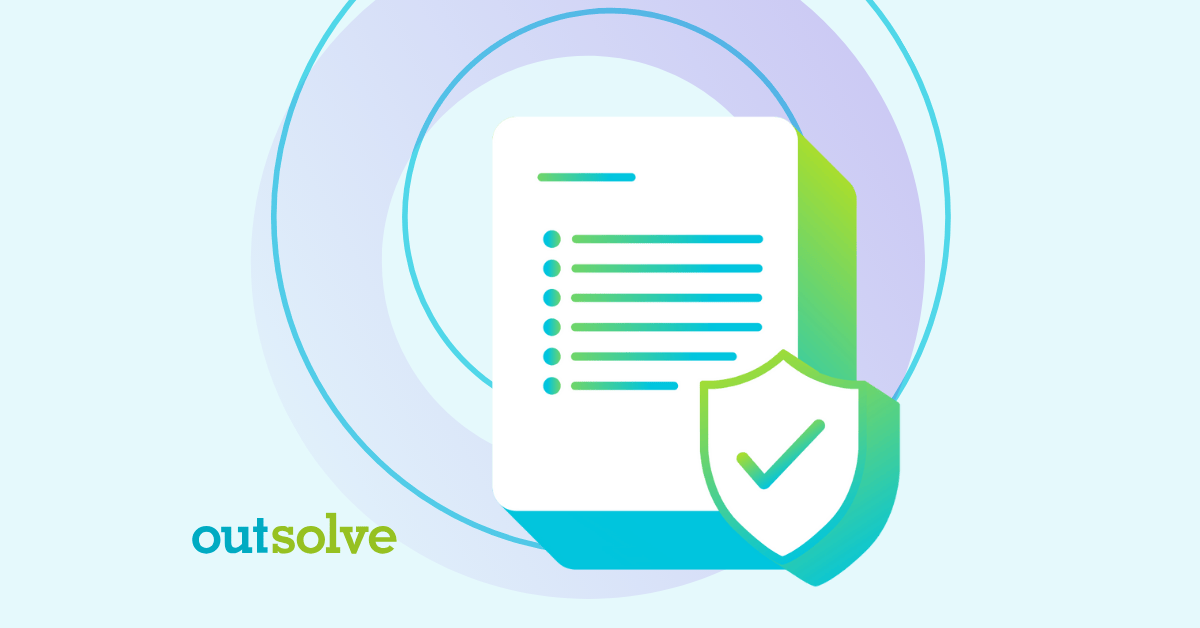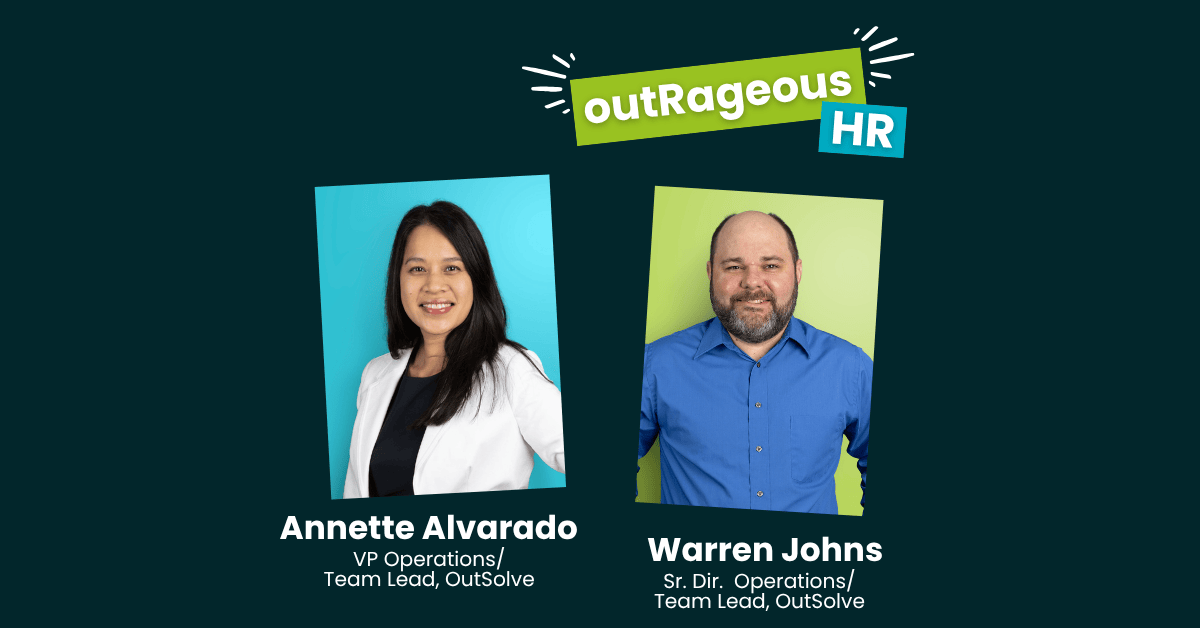3 min read
New Administration, New Compliance Challenges for Human Resources: Part 3
![]() OutSolve
:
May 29, 2025 9:30:21 AM
OutSolve
:
May 29, 2025 9:30:21 AM

This article is the third in an OutSolve research series for HR professionals that provides an analysis of the Trump Administration’s proposed changes to I-9 employment eligibility verification and other issues related to having foreign nationals in your workforce. While recognizing that specific policy details are still emerging, this series draws on historical precedents, administration statements, and expert analysis to offer insights and provide practical guidance to HR leaders.
Over the past couple of weeks, OutSolve’s research team has explored the Trump administration's immigration employment policy changes. In particular, the team highlighted the intention to tighten the immigrant employment verification processes and further restrict H-1B visa requirements. Many of these changes are already having an impact on American businesses. As mentioned earlier, these policies will disproportionately affect certain industries, such as agriculture, construction, and high-tech; as well as certain states like California and Texas. This article revisits the key findings from our earlier exploration along with a summary of recommended steps Human Resources professionals can take to prepare for expected changes and mitigate the disruption.
A New Enforcement Reality: Intensified I-9 and H-1B Scrutiny
The current administration has rapidly escalated immigration enforcement measures that directly impact U.S. employers, especially those reliant on foreign labor. Rather than introducing entirely new laws, the focus is on tightening the enforcement of existing regulations, particularly I-9 documentation and the H-1B visa program.
Stated “enhancements” to the I-9 process include a substantial increase in workplace audits to change the I-9 process, higher fines for violations, reduced correction periods for paperwork deficiencies, and the possible mandatory use of E-Verify. For employers dependent on H-1B visa workers, the most significant change is a tighter definition of “skilled worker.” This revision will have the most direct impact on the tech industry that is accustomed to hiring foreign workers to do basic programming tasks.
The current administration’s approach goes beyond previous eras of enforcement intensity and demand prompt attention by HR and compliance teams across affected industries. These evolving mechanisms signal a systemic effort to harden compliance expectations. Employers now face increased documentation demands, reduced flexibility in remediation, and heightened legal exposure. Notable shifts include:
| Regs/Requirements | Current Enforcement (2017–2024) | Expected Shift (2025→) |
|
I-9 Audits |
5,000–6,000/year |
12,000–15,000/year |
|
Penalties for Violations |
$2,000–$16,000 per offense |
Up to $28,619 per unauthorized hire |
|
E-Verify |
Voluntary except for federal contractors |
Potential mandatory nationwide use |
|
Enhanced Enforcement |
Federal Agency responsibility |
Local law enforcement “deputized” to work with ICE |
|
H-1B Selection |
Random lottery |
Merit-based system with stricter job descriptions |
|
H-1B Fees |
$10 registration |
$215 fee per applicant |
From a Human Resources management standpoint, the increased frequency of unannounced inspections and the push for advanced verification systems require heightened documentation discipline and interdepartmental coordination. HR professionals are expected to manage these rising risks while maintaining operational continuity. Organizations with high percentages of immigrant workers, particularly in agriculture, hospitality, construction, food processing, and technology, are now under magnified scrutiny and face the most pressing compliance challenges.
From Construction to Coding: Industries Most at Risk
The regulatory tightening disproportionately impacts sectors that depend heavily on immigrant labor. Agriculture and Construction are especially vulnerable due to their high reliance on seasonal and undocumented workers. These industries, along with a few others, often lack robust HR systems to manage complex compliance tasks. Technology firms, while less affected by I-9 audits, are grappling with stricter H-1B requirements, including narrowed definitions of "specialty occupations" and higher wage thresholds.
Industries Most Affected
- Agriculture – High reliance on undocumented seasonal labor
- Construction – Complex contractor arrangements increase documentation risks
- Hospitality – High turnover and small business HR gaps
- Manufacturing & Food Processing – Already under heavy ICE scrutiny
- Staffing Agencies – Complex multi-client documentation burdens
- Technology – H-1B restrictions hinder skilled talent acquisition
See OutSolve blog for more detail.
From California to Florida: States Most at Risk
Geographically, the impact is concentrated in states with large immigrant populations and labor-intensive industries. California, Texas, Florida, and New York face dual threats across agriculture, technology, and service sectors. Washington State’s tech-heavy economy is also at risk due to its dependence on H-1B talent. In all these regions, businesses are already reporting labor shortages, heightened administrative burdens, and concerns over how to maintain productivity amid regulatory uncertainty.
States Facing Highest Risk
- California: Dual reliance on immigrant farmworkers and H-1B tech talent
- Texas: Border proximity, immigrant-heavy industries
- Washington: Tech ecosystem dependent on H-1Bs
- New York: Mix of high-skilled and service-sector immigrant labor
- Florida: Heavy in tourism and agriculture
See OutSolve blog for more detail.
Recommended Actions for Human Resources Professionals
HR professionals must move beyond reactive compliance and build proactive processes that can withstand audits, legal challenges, and shifting regulatory interpretations.
Recommended steps include:
- Conducting full internal audits of I-9 records
- Transitioning to digital I-9 systems with audit trails
- Engaging with a third-party I-9 compliance service provider
- Training HR and hiring teams on documentation best practices
- Preparing an ICE response protocol
- Benchmarking H-1B salaries and redefining job descriptions
- Building alternative talent pipelines domestically
Forward-thinking organizations are also advised to establish cross-functional task forces to manage compliance risks, monitor regulatory updates, and prepare budgets for enforcement-driven cost increases. Ultimately, HR’s role is expanding from administrative oversight to strategic risk leadership amid evolving federal policies.

Related Articles
Founded in 1998, OutSolve has evolved into a premier compliance-driven HR advisory firm, leveraging deep expertise to simplify complex regulatory landscapes for businesses of all sizes. With a comprehensive suite of solutions encompassing HR compliance, workforce analytics, and risk mitigation consulting, OutSolve empowers organizations to navigate the intricate world of employment regulations with confidence.
Weekly OutLook
Featured Posts

The Federal Government Shutdown Lingers: HR Professionals Take Action

HR Planning: 5 Planning Steps for Q4
Related Posts

Federal Contractor Compliance: What HR Teams Need to Budget For in 2026
2026 is quickly approaching, and HR professionals working in federal contractor organizations have more than just recruiting goals, engagement...

CHRO Survival Guide: Talent, Culture, and Leadership: How CHROs Can Thrive in Uncertain Times
In Part 2 of our CHRO Survival Guide series, we explored the costs of deregulation, the intensity of I-9 and E-Verify enforcement, and the impact of...

The Federal Government Has Reopened: What’s Next for Federal Contractors
As non-essential government offices reopen, human resources, EEO, and compliance professionals in government contractor workplaces may want to...
